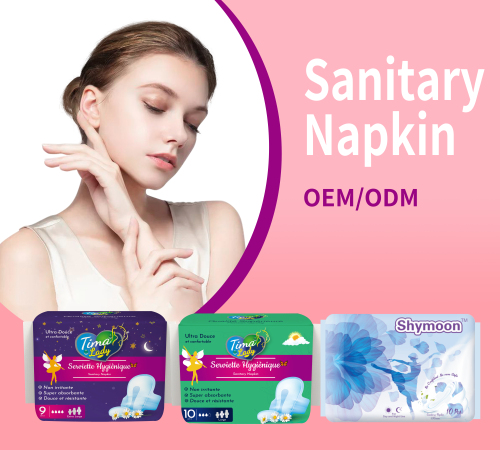Introduction
Sanitary napkins, also known as pads or menstrual pads, are a crucial product for women worldwide. They are crucial for women who menstruate to maintain hygiene and prevent infections.
Woman disposable sanitary napkins have been around for centuries. They have evolved over time, from rags to modern-day pads. The goal has always been the same to provide comfortable and safe menstrual products for women. In this article, we'll explore the raw materials used in pads, their function, and their development over the years. The mainstream sanitary napkins in the market are made up of various raw materials, each playing a key role in their functionality.
Absorbent Material
The absorbent material in pads is the most essential component. This material ensures that the blood is efficiently absorbed and kept away from the user's body. The most common absorbent materials are cotton, cellulose, and superabsorbent Polymer (SAP). While old-fashioned pads primarily used cotton as the absorbent material, modern pads use a combination of cotton, cellulose, and SAP. This technology significantly improves the absorbency of the pad and reduces leakage.
Cover Material
The cover material will make contact with the user's body. Hence, the material of the cover must be comfortable, soft, and skin-friendly. The primary cover materials used are nonwoven fabrics or synthetic materials. The covers are often treated with chemicals to make them hydrophobic, which keeps the menstrual blood from wetting the cover.
Adhesive
The adhesive is used to keep the pad in place in the user's underwear. The adhesive commonly used is a pressure-sensitive adhesive made from natural or synthetic rubber. The adhesive's material ensures that it sticks to the underwear and quickly releases when the pad is to be changed.
Other Raw Materials
Other raw materials used in the production of sanitary pads include release paper, which is the thin paper lining that is peeled off the adhesive side of the pad. Another is a wrapper, usually made of plastic, that keeps the pad clean and easy to store.
Evolution of Sanitary Pads
Sanitary pads have come a long way since their inception. In the 19th century, women might have used cotton rags or towels that were cleaned and reused. By the 1900s, disposable pads were commercially available, but they were bulky and expensive. As technology advanced in the 1960s, pads became thinner and more popular with women globally. The 1980s saw the introduction of wings, which added extra protection from leakage. In the 2000s, the production of organic and eco-friendly menstrual pads increased. The pads are comprised of biodegradable or reusable materials with less environmental impact.
Sanitary napkins have been advancing since their creation, with better absorbent materials, cover materials, adhesives, and manufacturing methods. These menstrual products play a vital role in women's health and hygiene. We, Xiamen Hongfutai Hygiene Products Factory. We are a professional OEM manufacturer in China, now striving to produce pads with sustainable, skin-friendly, and highly absorbent materials, free from chemicals that could be harmful to women's reproductive health. We innovate and develop many new popular Cotton sanitary pads napkin wholesale price and ultra thin lady sanitary pads napkins, welcome to contact us for more details!
We know, we understand and we care♥
